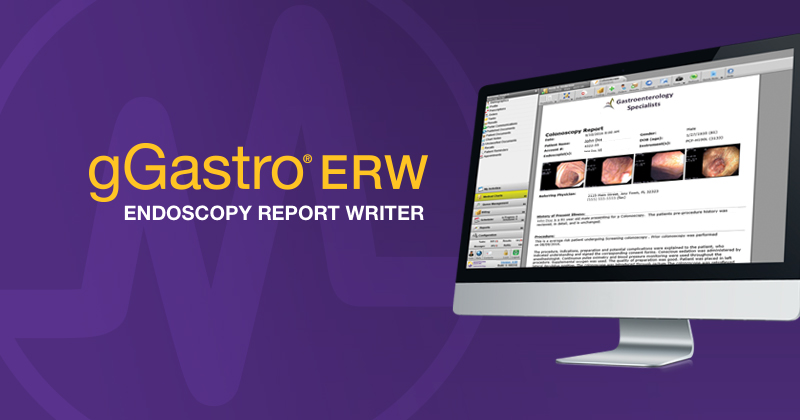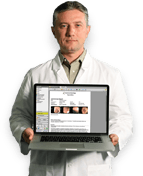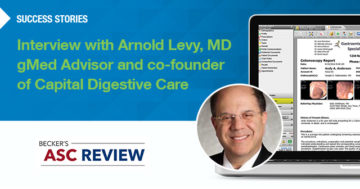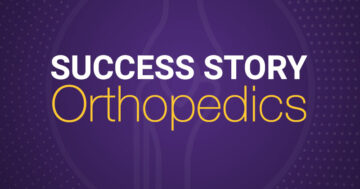HD Image Management With gGastro® Endoscopy Report Writer

Here’s why you should use HD endoscope camera software
As the saying goes, pictures are worth a thousand words. For a gastroenterologist, photos from colonoscopy and upper endoscopy exams are worth even more than words, as they can directly reflect and affect the health of your patient. Using an endoscopy report writer with the best image capture technology can be of great help to you and your ability to provide your patients with the best care. Using high definition (HD) image capture within your endoscopy camera software further contributes to improving the level of care you can deliver.
HD has set the standard for the type of crisp, clear images we expect to see when watching our favorite sports team or newest action blockbuster on TV; so why shouldn’t the same quality of visuals apply when it comes to something far more important: the care and health of your patients?
What affects the quality of endoscopy images?
Three factors that will impact image quality are:
- Data transfer rate (DTR): A higher rate will help enable clear video streaming
- Compression: This helps to reduce file size by removing unneeded data; compressing an image or video too much can diminish quality
- Image format: Various image formats such as BMP, JPEG, TGA and TIFF offer varying quality, file size and compatibility for still images. Videos also have various options such as MPEG and WMV.
You’ll want to understand how to best capture and export images from your endoscopy reporting software to produce the best quality images. Like with HD still image capture, an HD video will also illustrate greater image detail of your endoscopy procedures.
How can endoscopy images and videos be used?
Medical images and video can reveal a plethora of information especially when paired with medical documentation and diagrams. Systemic endoscopic image documentation shows crucial anatomic landmarks, documents the extent of the examination and demonstrates the quality of cleansing and mucosal visualization.
HD endoscopy images are important to help a gastroenterologist make correct and accurate patient diagnoses and track changes over time. These images could also be used for furthering patient and physician education and assisting in population health research. In addition to capturing quality still images, capturing quality video images lends itself to another level of excellence for providing the best patient care.
As long as an HD cable option is used along with the HD scope or processor, images captured in the endoscopy report writer will come in HD, providing a much higher quality image for review.
What to know about DICOM® imaging
When considering endoscopy reporting software, you should also make sure it has DICOM compatibility (Digital Imaging and Communications in Medicine). According to SearchHealthIT.com, “DICOM is a standard protocol for the management and transmission of medical images and related data and is used in many healthcare facilities.”
The National Electrical Manufacturers Association (NEMA), along with the American College of Radiology (ACR), developed DICOM to help create an international standard to manage medical images and data with the underlying mission of interoperability.
DICOM image sharing capabilities can help gastroenterologists who use an endoscopy report writer share images across health information technology (HIT) systems. Used in hospitals worldwide, DICOM improves the interoperability of systems used to produce, store, display, send, query, process, retrieve, print medical images and derive structured documents, as well as to manage the related workflow.
Reporting ease with your endoscopy software
In your photo capture, you want the ability to easily and quickly label images and their anatomic location with a one-click report or quick note. Additionally, saving templates and favorites for each physician can reduce redundancies saving you time to focus even more on patient care.
Opting for Modernizing Medicine® Gastroenterology’s gGastro® ERW endoscopy software, can help you streamline image capture when it comes to storage of HD still and video images, labeling images using anatomical diagrams, saving images and videos to your desktop and printing images directly from reports.
Opt for an all-in-one endoscopy image capture and reporting software
HD image capture is just one small component of what you need when it comes to your endoscopy reporting software. Simply put, you need an all-in-one gastroenterology solution. Your endoscopy report writer should provide the flexibility to combine your ambulatory surgery center, office and hospital with a single software solution. Having the ability to work with an integrated gastroenterology electronic health record (EHR) system, endoscopy report writer (ERW), practice management (PM) system, analytics platform and patient engagement tools can make all the difference (i.e. everything on the same platform).
The key is having the power to update critical patient data seamlessly and efficiently. If you’re unsure of how your current endoscopy report writer stacks up, I suggest reading this guide on the top 10 questions to ask an endoscopy report writer vendor.
In asking about an endoscopy vendor’s software, focus on understanding the user experience, your web and cloud-based options and the number of concurrent users just to name a few.
Conclusion
When considering endoscopy reporting software, think bigger picture and consider how a true all-in-one integrated gastroenterology platform can benefit you, your staff and your patients in virtually any care or business-related setting. The best endoscopy reporting software should help you save time and provide the data you need when you need it. HD image management is one very important piece of the IT support you need for your care of your patients.
See how you can achieve a healthier practice with gGastro®

See how you can achieve
a healthier practice
with gGastro®
Get Social With Us
Featured Posts
Topics
The post HD Image Management With gGastro® Endoscopy Report Writer appeared first on ModMed.



